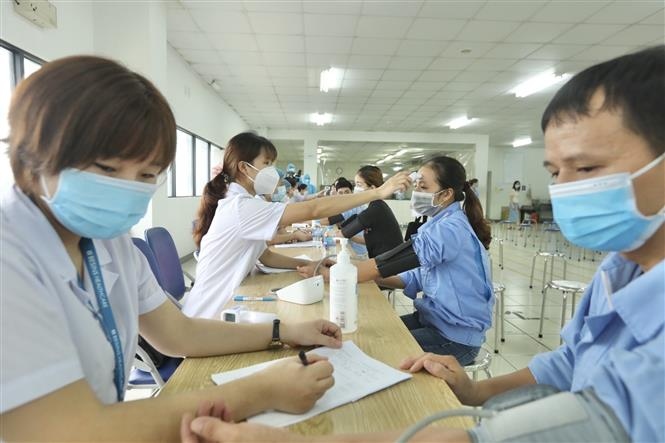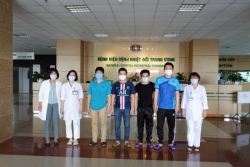
COVID-19 pandemic to increase unemployment rate: MoLISA
Latest
 |
| Covid-19 vaccination for Vietnamese labours at the Noi Bai industrial zone. (Source: VNA) |
The department said that in the first seven months this year, the number of enterprises withdrawing from the labour market was higher than the number of newly established enterprises. Specifically, more than 79,700 enterprises withdrew from the market whereas 75,800 enterprises were newly registered.
On average, more than 11,300 businesses withdrew from the market every month in the period.
The numbers of enterprises withdrawing from the labour market were higher in wholesale, retail, automobile and motorbike repair, manufacturing and processing, construction, accommodation, real estate business and education.
Unemployment increased because many businesses were no longer able to cope with the pandemic. The number of unemployed workers in the second quarter was 1.2 million, accounting for 2.62 percent of people of working age.
In July, the unemployment rate of people at working age in urban areas grew to more than 4 percent.
The number of people who stopped working is different between regions. Specifically, in 19 southern provinces and cities that are applying social distancing following Directive No 16/CT-TTg, nearly 20 percent of businesses have stopped operation and nearly 3 million people lost their jobs, accounting for 33.4 percent of the region’s total workforce.
In the central region, the rate of businesses temporarily suspending operation was at 3.4 percent, with more than 500,000 unemployed workers, making up 15 percent of the local workforce.
In the northern region, by August 5, a total 288 enterprises had to suspend operations in Bac Giang province with 15,262 workers made unemployed, and in Hanoi, 7,435 enterprises temporarily suspended operations with over 180,000 employees having to stop working.
Labourers in the agriculture, forestry and fishery sectors suffered the least negative impact of the pandemic with 8.9 percent of workers in this area affected, followed by those in industry and construction with 24.6 percent, and service sector workers hardest hit at 30.6 percent.
MoLISA has proposed a group of solutions to support businesses and workers in difficulties during the pandemic.
Localities have implemented measures to help with production and business recovery, economic development, and social stability, such as issuing programmes and policies to encourage young workers to improve their skills, and facilitate businesses, business households and workers’ access to loans to restore production and create jobs.


























